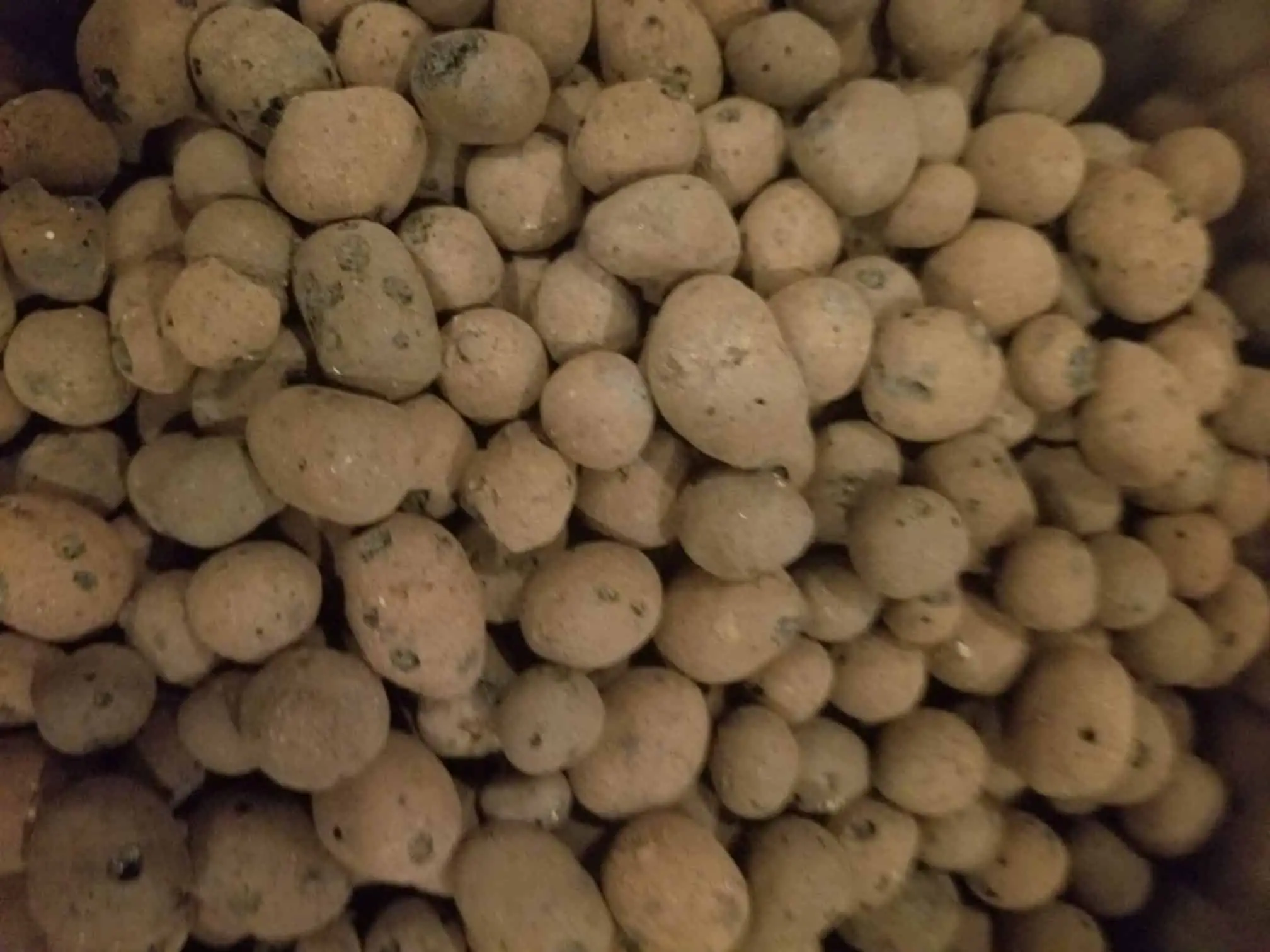Hydroponics is a technique that involves growing plants without soil. The plants obtain the nutrients they need from a solution containing dissolved fertilizer.
A growing medium is a substrate used to keep your plants in place in a hydroponic system. Growing mediums should be chemically inert and pH neutral so they do not react with the nutrient solution in your hydroponics system.
Many growing mediums have a high porosity (a lot of air space) which allows for good drainage and aeration for the roots. However, nonporous growing mediums may be appropriate for certain types of hydroponic systems.
There are a number of growing mediums available online and at most gardening centers. The list below describes some growing mediums that you should consider using in your hydroponic system.
Your choice of growing medium depends on a variety of factors including the type of hydroponic system, budget, availability, aesthetics, and personal preference.
Coco Coir
Coco coir is the material between the shell and outer coating of a coconut seed. It is a chemically inert medium with a nearly neutral pH. There are three types processed of coco coir:
- Coco pith or peat retains water very well. This is typically what people are talking about when they refer to coco coir.
- Coco fibers are stringy bundles that do not absorb water very well. Plant liners are made of this material.
- Coco chips are small chunks of coir. It looks like mulch.
Coco coir discs are commonly used in hydroponics and are also found in many bonsai tree kits. They are made of compressed coco pith and are available in various sizes. To use coco coir discs, soak them in water first. Then coco coir will expand to its full size.
In addition, coco coir mats are commonly used to grow microgreens. These mats are made of woven coco fibers.
A disadvantage of coco coir is that it can clog pumps and other components of hydroponic systems.
Rockwool
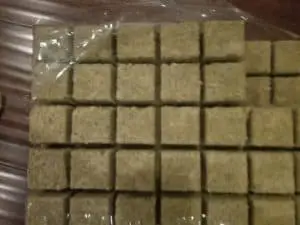
Rockwool is a chemically inert growing medium made of basalt rock and chalk. It typically comes in cubes and is available at many gardening centers. You can also purchase Rockwool on Amazon.
Although Rockwool is commonly used in hydroponics, it is also used in home insulation.
Rockwool is manufactured by melting basalt rock and chalk at high temperatures. Then this material is blown into a spinning chamber that forms the mixture into long thin strands.
An advantage of Rockwool is that it has a lot of air space. Between 90 and 95 percent of the space between Rockwool fibers are filled with air. This air space holds oxygen, water, and nutrient solution that are easily accessible to plants. This makes Rockwool a very good medium for propagating plants.
Another advantage of Rockwool is that it can be reused. Before reusing Rockwool, sterilize it with diluted hydrogen peroxide or bleach. Then rinse the Rockwool before using it before a new plant.
Dry Rockwool can be a respiratory irritant when inhaled. In addition, Rockwool can be a skin and eye irritant. Wear a face mask, gloves, and goggles when handling dry Rockwool.
It is also important to keep in mind that algae can grow on Rockwool. Make sure you cover the Rockwool so it is not exposed to light. Algae will be found where there is a combination of water, nutrients, and light. By removing Rockwool’s exposure to light, you minimize the chance of algae growth.
Once algae do grow on Rockwool, it is best to throw it away and put your plant in fresh Rockwool. The reason is that when you kill bits of algae, microscopic fungi show up and begin to decompose these bits. This can result in the growth of harmful pathogens such as pythium, wilt, and fusarium in your nutrient solution.
Hemp Growing Mat
Hemp growing mats are commonly used for planting microgreens, wheatgrass, and sprouts. They are made of 100% natural hemp fibers. Hemp growing mats are biodegradable and can be composted after use.
Because microgreens are only growing on hemp mats for about two weeks before harvest, there is no reason to add nutrients to it.
LECA
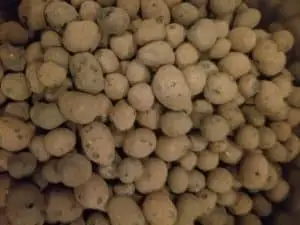
Lightweight expanded clay aggregate (LECA) is another very commonly used growing medium in hydroponics. They are also commonly called clay pebbles. If you have ever seen pots planted in what appears to be Cocoa Puffs on Instagram, that is LECA.
LECA is manufactured by heating clay to a very high temperature in rotating kilns. This process causes the clay to expand and creates air pockets pores. In hydroponics, the plant is able to wick moisture and nutrients through these pores.
An advantage of LECA is that it is very cheap. You can purchase it on Amazon. I have also heard that you can find LECA (and other supplies for semi-hydroponics) at IKEA for an affordable price.
Another advantage of LECA is that it can be reused several times. Before reusing LECA, rinse the salt off of the aggregates. Then boil the LECA to ensure all of the nutrients and pathogens are removed from the pores of the aggregates. This video demonstrates how to clean LECA.
Oasis Cubes (Floral Foam)
Oasis Cubes are a commercially available product used for starting cuttings and seeds. They are made of a water-absorbent foam known as Phenolic foam or Floral Foam.
Unfortunately, you cannot reuse Oasis Cubes. Once they have dried after use, they do not absorb water the way new ones will. In addition, bacteria start to grow in the air pockets.
However, they are also biodegradable. You should not compost Oasis Cubes because it is a petroleum-based product.
Growstones
Growstones are made of 100% recycled glass and look like little stones. They are commonly used as a growing medium for cannabis. Unlike LECA, Growstones have an irregular shape which allows the roots to adhere to the pieces more easily.
Growstones hold almost equal parts of air and water. This means that water drains through Growstones well and the roots will stay aerated.
Growstones are cheap and easy to use. Another advantage of Growstones is that they are more aesthetically pleasing than some of the other growing mediums on this list.
You can reuse Growstones. However, plant roots do adhere to the surfaces of Growstones which can cause sterility issues.
Vermiculite
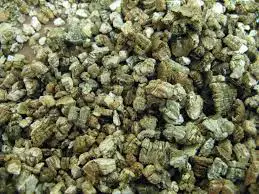
Another popular hydroponic medium is vermiculite. Vermiculite is a natural mineral that expands significantly when heated. It has excellent water holding capacity and is cheap.
Vermiculite is commonly used in nutrient film technique (NFT) systems. Many growers will combine vermiculite and perlite to improve drainage and aeration.
Some vermiculite products contain low levels of asbestos. In an EPA study, asbestos was found primarily in the unmixed vermiculite products, but some asbestos was found in pre-mixed potting soils. According to the Minnesota Department of Health, you should keep vermiculite wet when working with it. This will minimize the number of asbestos fibers in the air. If you are going to be working with dry vermiculite, consider wearing a mask.
Perlite

Perlite is a hydroponic growing medium that looks like little white rocks. It is a type of volcanic glass that expands when heated. It is a popular growing medium among hydroponic growers because it is cheap and easy to use. Many conventional soil gardeners will add perlite to potting soil mixes for better drainage.
Like other growing mediums on this list, perlite is a porous substance that provides good drainage and aeration. It can be reused many times (after washing) and will last for several years.
Unlike LECA or Growstones, perlite has smaller pores spaces because the perlite particles are smaller. This means that plants with aggressive root systems (e.g., chives, mint) can block the pore spaces.
Consider wearing a face mask when handling perlite. The Occupational Safety and Health Administration (OSHA) classifies perlite as nuisance dust.
Perlite is also a non-renewable resource. This may be an important consideration for some people.
Gravel
Another hydroponic medium to consider is gravel. Gravel is commonly used for drip or Ebb and Flow hydroponic systems because it drains water very quickly. Because gravel is fairly coarse, there is plenty of air space for roots.
However, gravel does not hold water. This means that it is not a good growing medium for Kratky hydroponics which relies on the capillary action of the growing medium.
An advantage of gravel is that it is cheap and easy to find.
Before using gravel for hydroponics, make sure you wash and sterilize it.
It is also important to remember that gravel is dense. Using gravel as a growing medium will make your hydroponic system much heavier.
Hydrogels
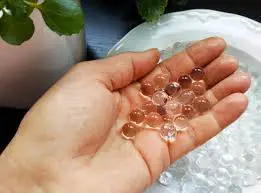
Water absorbing polymer crystals, also known as hydrogels, look like balls of jello. Hydrogels are a network of hydrophilic polymer chains.
Hydrogels can absorb a significant amount of water. When you put the beads in water, they will swell up to larger balls. After swelling, hydrogels will start to release nutrient solution slowly.
Hydrogels could be a good medium for growers who are seeking a low fuss way to grow plants or who travel a lot. This is because hydrogel slowly releases nutrients and water.
However, hydrogels do not release water and nutrients quickly enough for some plants. While they can supply the moisture needed to grow leafy greens and herbs, hydrogels cannot keep up with the demands of tomatoes and peppers. It may also be difficult to support larger plants with hydrogels.
Rice Hulls
Rice hulls are the hard protective covering of a rice grain. They are typically used as part of a growing media mix that consists of pine bark and rice hulls.
Some growers use rice hulls to achieve better drainage because it is a more sustainable alternative to perlite. Researchers at Purdue University found that rice hulls had the same effect as perlite. In addition, using rice hulls is attractive because greenhouses could sell the rice hulls when they are finished using them, thus increasing profits (Currey et al., 2010).
Growers can also produce as much food with rice hulls as using soil cultivation. A study conducted in Japan found that growers can harvest just as many tomatoes using rice hulls as traditional soil growing techniques. A higher yield can even be achieved if the rice hulls are reused (Kinoshita et al., 1999).
Rice hulls are not pH neutral. They have a pH between 5.7 and 6.5 which is within the acceptable range of pH values for hydroponic systems.
Fresh rice hulls are not typically used as a hydroponic growing medium because there is a high probability that they will contain pathogens and fungi that could adversely affect your hydroponic system.
Pool Noodle
Another hydroponic medium to consider is pool noodles. Yes, I am talking about those foam noodles that people use in the pool. Here is a video that explains how to grow lettuce in a pool noodle.
Sand
Pure sand is another very commonly used growing medium in hydroponics. Many hydroponics growers like using sand as a growing medium because it is cheap and widely available.
Sand is typically used in Sand Culture Hydroponics which involves growing plants in sand and nutrient solution. The sand is chemically inert and only provides structural support to the plant. Through capillary action, the roots are able to extract what they need from the nutrient solution.
Note that natural sand has some silt, clay, and organic matter. Therefore, natural sand is not typically used for hydroponic systems.
Here is a video about Sand Culture Hydroponics.
Pumice
Pumice looks similar to perlite. It is a lightweight material that consists of porous pebbles that are usually light grey or white in color. Pumice is made of molten lava that is cooled quickly. Although it is a bit more expensive than perlite, it is still a relatively inexpensive growing medium for hydroponics.
Pumice does not retain water, but it is good for drainage. It is typically used to grow tomatoes in bags or for propagating lettuce or herbs in NFT pots.
Because pumice has a high porosity, it facilitates a positive exchange of gases between the root zone and the outside environment.

